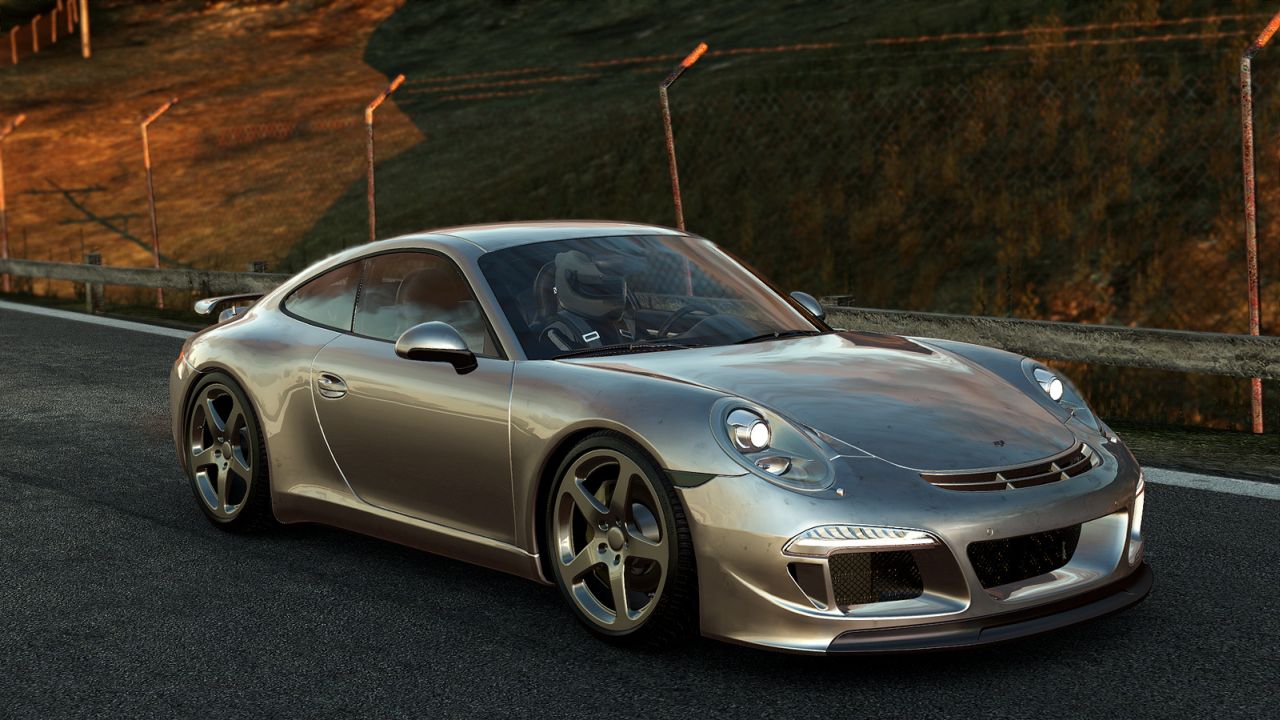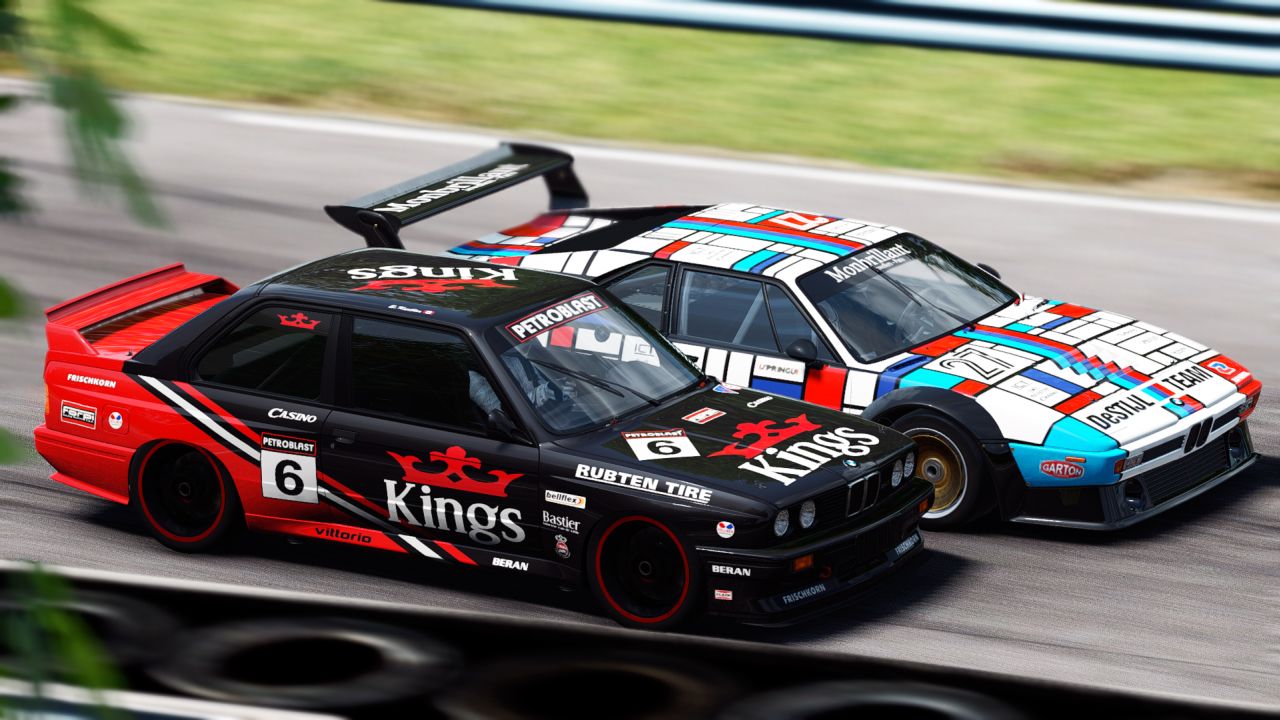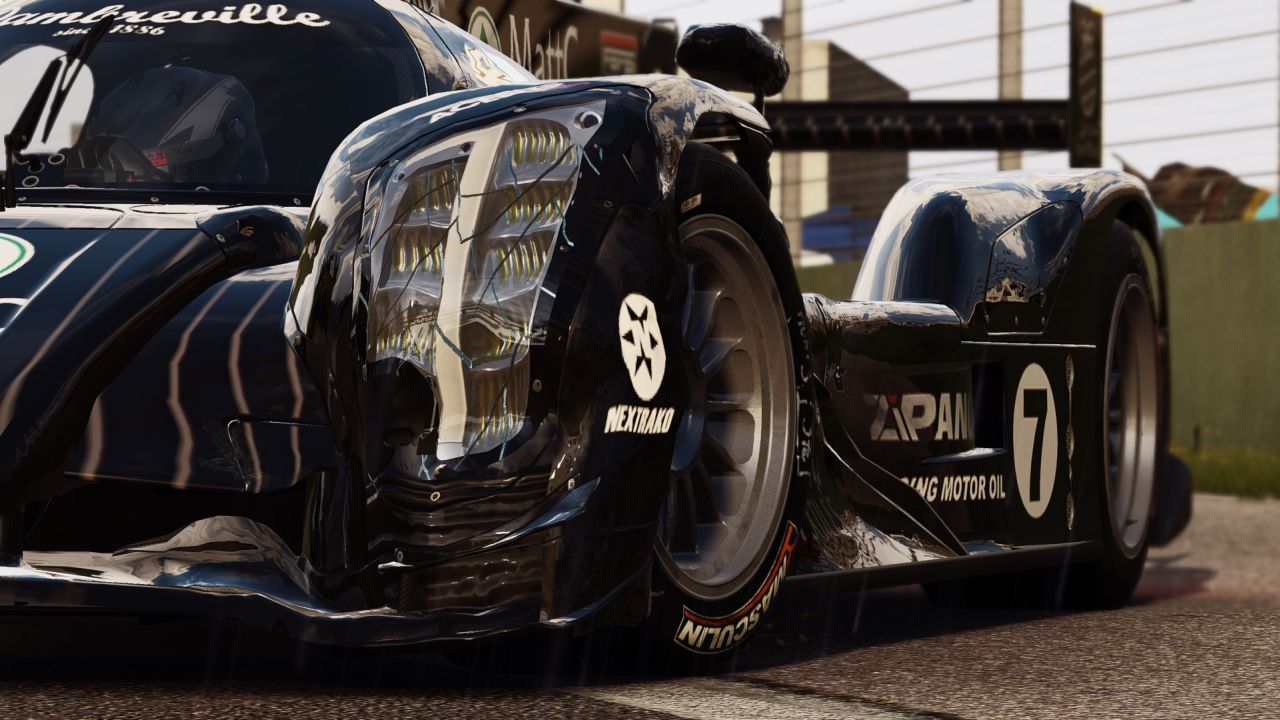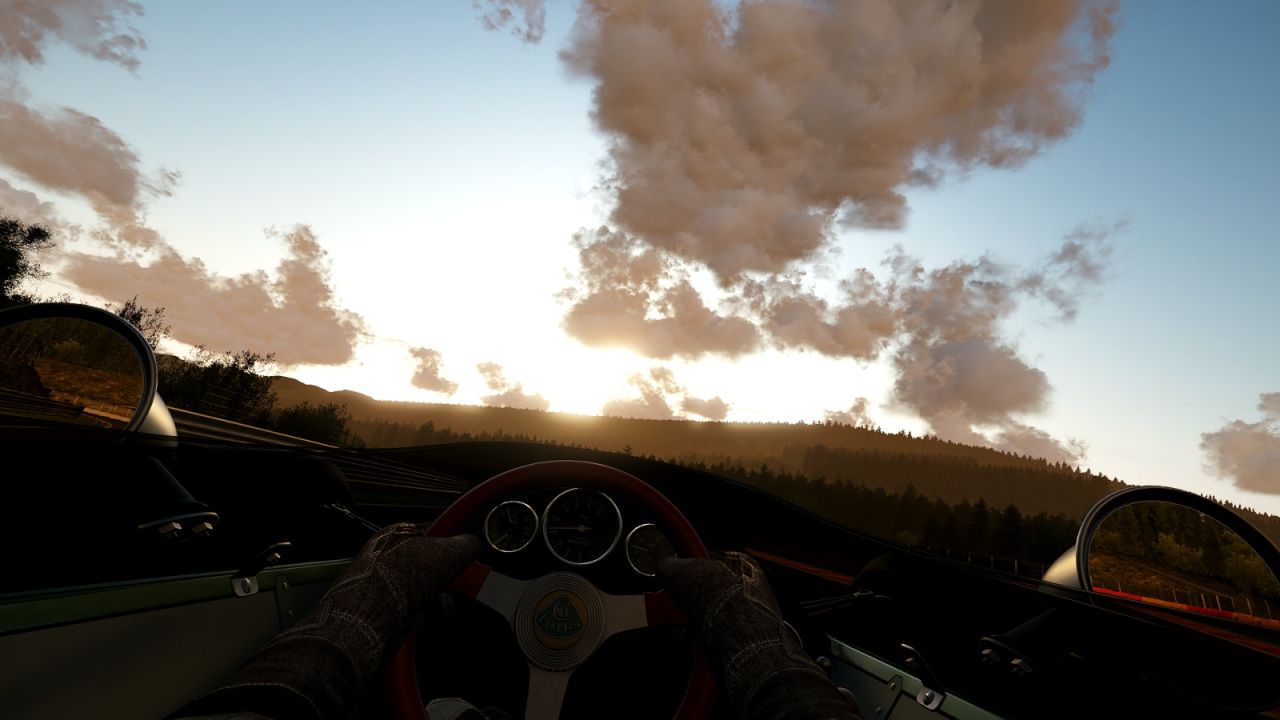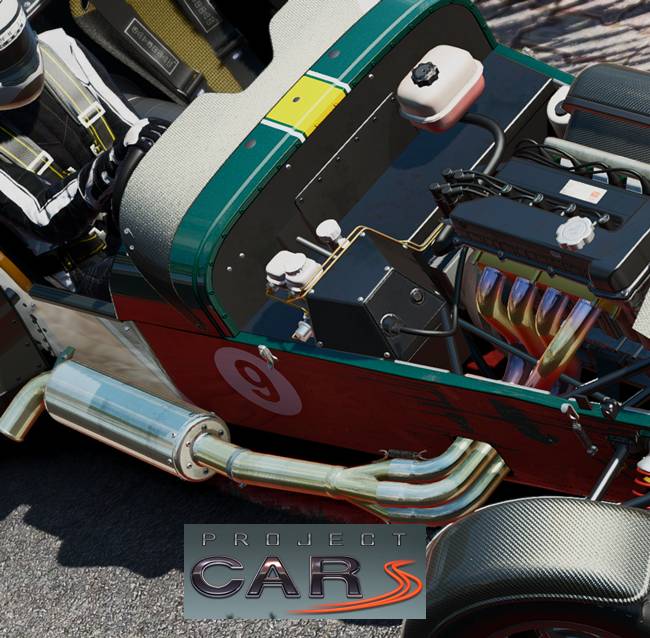
It’s not easy to break into AAA game development, especially without the support of a major publisher or huge development budget. It’s even harder to break into the racing game market with titles like Forza Motorsport, Gran Turismo, Need for Speed and the upcoming DriveClub garnering players’ attention. Despite this, Slightly Mad Studios have been developing Project CARS, a racing simulator that aims to cater to all racing fans, whether you’re looking for an in-depth competition or a quick lap or two.
GamingBolt recently spoke to creative director Andy Tudor about Project CARS especially pertaining to its shift from current-gent to next gen consoles, how it will differentiate itself from its competition and advancing the genre as a whole.
"Project CARS covers a wide range of motorsport types – from karts to stock cars to everyday road cars to the kind of supercars you see on Top Gear, to GT, formula racers, and prototypes."
Ravi Sinha: Project CARS was originally slated to release for the Xbox 360 and PS3, but now it will be coming to next-gen consoles. What prompted the sudden desire to cater to PS4 and Xbox One users, especially since the install base will still be relatively young by late 2014?
Andy Tudor: There were a number of factors that influenced the move. Firstly the power of the next-gen consoles allows the game to be showcased as it was ‘meant it to be seen’, the pipeline and architecture of the new machines makes the development process easier, we see the sharing features on both consoles as being extremely engaging for players, the ability to self-publish is appealing, retail space for last-gen games will slowly dwindle over the next year, and also given our timeline for launch there’ll be a better balance of the number of people out there in the mindset for next-gen gaming compared to those still playing their existing consoles. So overall there were a number of contributing arguments that indicated it was the right move to make.
Ravi Sinha: For that matter, you’ll also be releasing Project CARS on SteamOS. What advantages does an open, predominantly PC platform such as SteamOS offer?
Andy Tudor: SteamOS means that high-end PC hardware can move from being hunched over at a desk to relaxing on the couch in the living room so it destroys a barrier that’s always been present between PC and consoles markets. It’s also not a fixed spec, so game technology can evolve at the same pace as the hardware instead of being fixed in for a long cycle as we experienced with the last-gen consoles. Open platforms also make game development accessible to more people and that’s good; it results in innovation and diversity and everyone – both gamers and developers – benefit from that. Plus, that controller opens up a wealth of new ideas!
Ravi Sinha: How many cars and tracks are you planning to have in the final game? Do you have some biggies included?
Andy Tudor: Journalists – please stop asking this question! How many guns are there in Call of Duty: Ghosts compared to Battlefield 4? How many different enemy types are there in Dead Rising 3 compared to Ryse?
Project CARS covers a wide range of motorsport types – from karts to stock cars to everyday road cars to the kind of supercars you see on Top Gear, to GT, formula racers, and prototypes. So we aim to be close to a hundred cars to choose from across that huge variety but we never start a project with a mindset of “Let’s add as many as we can” since five variations of the same car don’t necessarily make a better game in our opinion.
For track locations we’re going for global coverage so there are US circuits as well as a ride along the California coastline and other point-to-point drives, iconic locations you’ll be familiar from European motorsports, and beautiful locations from Asia, Oceania, and the Middle East. When you include multiple layouts of those (including historical recreations too!) we currently have more tracks than either Gran Turismo 6 or Forza 5.
"When it comes to visuals, audio, and physics, Project CARS has continued to wow people throughout development..."
Ravi Sinha: Project CARS has always prided itself on being built without big-name publisher aid. What are your thoughts on the competition, especially with the likes of Forza and DriveClub, and how will Project CARS work to differentiate itself from the pack?
Andy Tudor: I think we have a far more sandbox approach to Project CARS. All cars, tracks, and motorsports are open from day one… we won’t be asking you to buy tokens to get hold of them for example ;-). If you want to jump straight into the career of a LeMans Prototype driver then you can, but if you also want a more traditional ‘zero to hero’ career then that progression is available too. It feels more like a sports franchise like FIFA therefore – pick your team, start playing through a calendar year, strive for success, get rewards/opportunities, and then change teams or move onto a completely different motorsport. There’s inherent freedom in that.
When it comes to visuals, audio, and physics, Project CARS has continued to wow people throughout development whether it’s with a fan-made trailer, beautiful screenshots the community have taken, direct comparison videos with other games, or the continual anticipation and excitement on the most prominent racing and gaming forums. Players can be assured therefore that when the game comes out, they’re getting the most authentic, accurate, beautiful, and immersive race experience out there, and that it was made by you guys – the actual players.
Ravi Sinha: Can you please confirm the resolutions and frame rates at which the PS4 and Xbox One versions will run at? Are you planning to push it to 1080p/60fps?
Andy Tudor: Our aim is always for the best gameplay experience possible and if that means 1080p/60fps is achievable without compromising ‘awesome stuff happening whilst racing’ then fantastic. So it’s the target yes, but it’s something every developer has to balance nearer to launch and it’ll be no different for ourselves.
"The cloud is pretty interesting and it opens up a new area for developers to explore in terms of design and technology. It might be useful for patching/updating the game but that’s not dissimilar to a digital download patch that players are already used to on Xbox Live."
Ravi Sinha: Given that Project Cars is a continuously evolving project do you see the Xbox One cloud as a major benefiting factor? You could probably use the Xbox One cloud to patch or making changes to the game on the fly. What are your thoughts on this?
Andy Tudor: The cloud is pretty interesting and it opens up a new area for developers to explore in terms of design and technology. It might be useful for patching/updating the game but that’s not dissimilar to a digital download patch that players are already used to on Xbox Live. We have ideas for where we’d like to see cloud integration and those are top secret right now but I believe we’ll definitely see games utilise the cloud to add some very cool new features and design components to the next generation of games.
Ravi Sinha: The PlayStation 4 has been unanimously praised for its ease of development and an efficient APU. Considering there is a lot of development challenge involved in regards to playing with different CPU threads and GPU compute units, what can you share about your experience with working with the PlayStation 4?
Andy Tudor: It’s been challenging splitting the renderer further across threads in an even more fine-grained manner – even splitting already-small tasks into 2-3ms chunks. The single-core speed is quite slow compared to a high-end PC though so splitting across cores is essential. The bottlenecks are mainly in command list building – we now have this split-up of up to four cores in parallel. There are still some bottlenecks to work out with memory flushing to garlic, even after changing to LCUE, the memory copying is still significant.
Ravi Sinha: We have spoken with a few developers in the past regarding the Xbox One’s eSRAM. Some say it is a perfect solution for storing zbuffer and shadow maps. What are your thoughts on the same? Do you think it possesses any sort of advantage over the unified memory found on the PlayStation 4?
Andy Tudor: Our engine uses a light pre-pass style rendering approach and after experimenting with a number of different variations we found it was more efficient to use eSRAM to hold the deferred render targets. Careful use of eSRAM like this for the various render stages mitigates some of the advantage that PS4 has with its faster unified GDDR5 memory.
"If we do implement either Kinect or touchpad functionality it has to really mean something rather than just be a gimmick. Is moving around your living room the optimal experience for Game Feature X or would a simple button do just fine?"
Ravi Sinha: I have been following the progress of the game for the last few years and with every build you guys are pushing the limits in terms of physics, handling, gorgeous textures and what not. I am wondering whether there will be a point where you will just stop and say ‘we can’t push the visuals any further’.
Andy Tudor: I don’t think so, no. Our MADNESS engine was built from the ground up to automatically take advantage of new hardware innovations, more cores, faster RAM etc. So when new technologies like 4K and Oculus Rift come along it just allows us to keep raising the bar on what’s possible from both a technical and artistic standpoint. We love embracing anything that allows the gap between game and reality to blur further whether that’s hydraulic simulator seats, force feedback wheels, virtual reality headsets, triple-screen setups, or 3D-capable graphics cards. We have to stop at one point obviously, but thankfully new technology is constantly appearing and both our tech and staff are capable of utilizing it.
Ravi Sinha: Project CARS will be released on the Wii U. Given that it’s the least powerful machine you are building the game for, do you think it will undermine the selling point of the game i.e. visuals?
Andy Tudor: No, if anything I think it’ll showcase the hidden power that the Wii U has. There’s no equivalent of Project CARS on Wii U, yet we hear the shouts from Nintendo fans loud and clear that they can’t wait to get their hands on this kind of experience so we hope to make them proud with the quality of the visuals. Sure there are maybe more stringent technical constraints but the same core experience will remain, plus additional features that take advantage of the controller’s unique second screen and touch interface.
Ravi Sinha: Do you have any plans for using the PlayStation 4’s Share feature?
Andy Tudor: Yes. As you’ll have seen from our YouTube presence, the gameplay videos and trailers people have been making so far are getting millions of views so being able to share or stream your proudest moments direct from the game either via Twitch or Upload Studio are pretty engaging features.
Ravi Sinha: Do you see Project Cars using the Kinect or DualShock 4’s touch pad? Furthermore how do plan to improve the gameplay further by the use of Oculus Rift and TrackIR?
Andy Tudor: Potentially. If we do implement either Kinect or touchpad functionality it has to really mean something rather than just be a gimmick. Is moving around your living room the optimal experience for Game Feature X or would a simple button do just fine? Relating to head tracking for example, yes you could move your head left/right and the Kinect would make your driver do the same but it’s actually kind of awkward because your eyes need to stay fixed on the screen so in the end it doesn’t feel natural.
"By including the community from day one on decisions both large and small we’ve had a constant barometer to whether the ship we’re steering is on course with what people actually want."
That’s where Oculus Rift is perfect though – physically it feels like you’re wearing a racing helmet and the view you see therefore has a 1:1 link of “If I turn my head to the right, I will look out of the driver-side window”. VR gives you better spatial awareness of the inside of a cockpit for example, allowing you to glance left as you overtake someone or physically look up to the rear-view mirror just as you would in real life. So we pick and choose which items we include and make sure they’re bespoke to the experience.
Ravi Sinha: You guys did the impossible possible by getting a game up and running totally through community support. The game not only looks beautiful but plays well and I see it has a strong social presence on YouTube. Given the fact that you guys can direct communicate with the end consumer, do you think the industry is heading towards crowd funding and the publishing will be a thing of past?
Andy Tudor: You’re right, we’re the first AAA game to be made like this so there’s a certain pressure, responsibility, and expectation for us to not only pave the way but ultimately succeed in our vision. Every game can benefit from getting people playing your game and giving feedback on it as soon as possible. Traditionally this is only ever done nearer the end of the development cycle (eg. E3 demos, focus groups, closed beta tests etc..) but by that point it’s hard to change things radically if they just don’t connect with players.
By including the community from day one on decisions both large and small we’ve had a constant barometer to whether the ship we’re steering is on course with what people actually want. And that has both given a certain level of confidence that we’re making a game that people think is kickass, and has ensured a high level of polish throughout since we’ve had the biggest team of QA testers ever assembled.
Does that mean all games will become self-published? Well no, publishers still play a huge role in the games industry, but crowd-funding has given a chance to some fantastic games like RIOT, Paradise Lost, Darkwood, and Among The Sleep to get made where potentially a publisher would not have taken a risk. And that’s great for creativity, great for the industry, and great for gamers.








